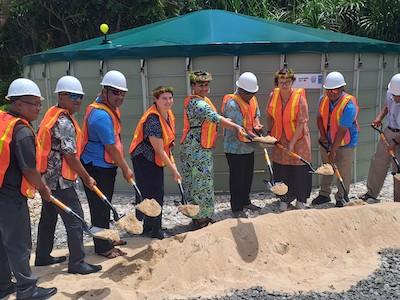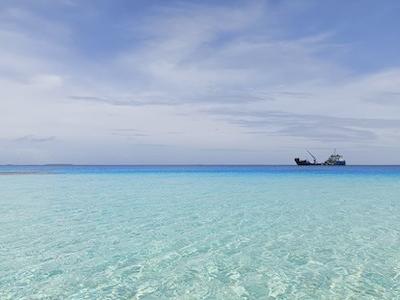Marshall Islands

Overall, the most appropriate and effective adaptation measures and strategies are most likely to be those that will be beneficial even in the absence of climate and sea-level change. Such measures and strategies could be considered as “no regrets” adaptation options. Therefore, in the first instance, the capacity of the Marshall Islands to adapt to the effects of climate and sea-level change will largely be determined by its ability to address on-going environmental, social and economic problems. Adaptation includes three main types of activities. First, there are adaptive actions that include activities targeted at specific sectors where climate change effects have been identified. Second, another group of adaptive measures are equally important and include general policies and actions by government to address some of the social driving forces of environmental problems which will heighten vulnerability to climate change effects. Third, it is also important to increase the capabilities of the Marshall Islands to effectively implement adaptations.
The Republic of the Marshall Islands (RMI) are located off the northeast coast of New Zealand, scattered in an archipelago consisting of two roughly parallel island chains. There are twenty nine atolls and five reefs without lagoons which are made up of about 1,225 islands and 870 reef systems. Twenty-two of the atolls and four of the islands are inhabited. The atolls extend about 700 miles (1130km) north to south, and about 800 miles (1290km) east to west. While some of the islands are several kilometers long they rarely exceed a few hundred meters in width and are often considerably narrower. Land elevations are very low, with a mean height above sea level of only two meters (7 feet). The combination of small land areas and low land elevations contributes to the ecological vulnerability in the Republic. There is concern that any change in sea-level could seriously upset the fragile balance between the land and the sea. The RMI consist of fragments of Islands or low Lying Atoll Courtesy of MIVA. Isolated by ocean, the Republic is more than 2,000 miles (3230km) from the nearest trading centers, Honolulu and Tokyo. Geographically, the RMI’s nearest neighbors are Kiribati to the south and the Federated States of Micronesia to the west. The Republic’s Exclusive Economic Zone (EEZ) encompasses over 750,000 square miles (1.2 million sq km) of the Central Pacific. Subsistence agriculture and fishing are the country’s main industry; the tourism industry makes a noteworthy contribution along with a development funds from the United States.




